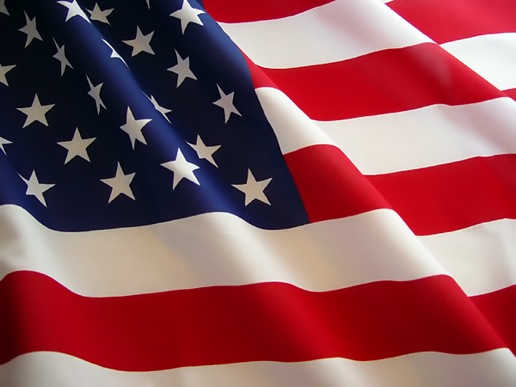
Thought my readers may find this interesting. Thank you Wikipedia!
FLAG CODE
The United States Flag code outlines the proper display, and disposal of the flag.
For example, the flag should never be dipped to any person or thing, unless it is the ensign responding to a salute from a ship of a foreign nation. This tradition may come from the 1908 Summer Olympics in London, where countries were asked to dip their flag to King Edward VII: the American flag bearer did not. Team captain Martin Sheridan is famously quoted as saying "this flag dips to no earthly king", though the true provenance of this quotation is unclear.
The flag should never be allowed to touch the ground and, if flown at night, must be illuminated. If the edges become tattered through wear, the flag should be repaired or replaced. When a flag is so tattered that it can no longer serve as a symbol of the United States, it should be destroyed in a dignified manner, preferably by burning. The American Legion and other organizations regularly conduct flag retirement ceremonies, often on Flag Day, June 14. It is a common myth that if a flag touches the ground or becomes soiled, it must be burned as well. While a flag that is currently touching the ground and a soiled flag are unfit for display, neither situation is permanent and thus the flag does not need to be burned if the unfit situation is remedied.
Significantly, the Flag Code prohibits using the flag "for any advertising purpose" and also states that the flag "should not be embroidered, printed, or otherwise impressed on such articles as cushions, handkerchiefs, napkins, boxes, or anything intended to be discarded after temporary use". Both of these codes are generally ignored, almost always without comment.
One of the most commonly ignored and misunderstood aspects of the Flag Code is section 8. "The flag should never be used as wearing apparel, bedding, or drapery." Section 3 of the Flag Code defines a flag for the purposes of the code. It clarifies the definition to include any picture or representation of the flag purporting to be of the flag of the United States of America. Therefore T-shirts, or other apparel made of or containing a representation of the flag are in violation of the code.
Although the Flag Code is U.S. federal law, it is only binding on government institutions displaying the flag: there is no penalty for a private citizen or group failing to comply with the Flag Code and it is not widely enforced—indeed, punitive enforcement would conflict with the First Amendment right to freedom of speech. Passage of the proposed Flag Desecration Amendment would overrule legal precedent that has been established.
No comments:
Post a Comment